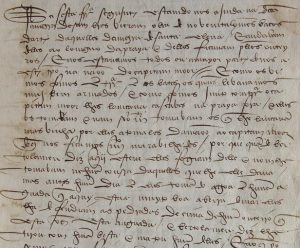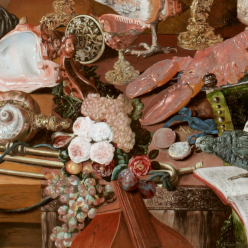
African involvement in the Spice Trade was minimal before Vasco da Gama’s journey around the Cape of Good Hope. At this time, trade between Europe and Asia was flourishing, and European countries were becoming more and more dependent on Asian production as demand for spices increased. However, some spices of particular value to Europe, such as cloves, were simultaneously being developed in Africa and had yet to be exported into the larger spice trade. Vasco da Gama’s exploration throughout the Swahili coast brought to the Portuguese a new sense of appreciation for African potential in the spice trade. Through this, Portugal’s ultimately gained control of African spice exports, bringing countries like Zanzibar an opportunity to develop their manufacture of cloves on a larger scale. This resulted in Zanzibar’s role as a leading clove exporter by the nineteenth century.
The Spice Trade was a pillar of early modern globalism, broadening European economies to an intercontinental scale and connecting European and Asian cultures through food. A range of spices poured into Europe from China, Indonesia, and India that introduced flavor into the European diet and novelty into their medicine. Nutmeg, pepper, ginger, cloves, and more were “believed to cure disorders of the stomach, the intestines, the head, and the chest, and were also used to aid digestion.” Spices were also used in various ways through cooking, helping to preserve meat, mask undesirable odors, and add flavor to food. These multifaceted spices were of great value to populations throughout the European continent, and travelers went to great lengths to bring them to the market. Prior to Vasco da Gama’s voyage in the Indian Ocean, the Spice Route centered around a number of different cities throughout Asia. However, in 1498, when Vasco da Gama rounded the Cape of Good Hope and arrived in Calicut, he prompted a new age of Euro-Asian trade for Portugal, as well as introducing a larger role for African countries in the spice trade.
Da Gama introduced new trade partners for Portugal in various African countries along the Swahili coast, including Zanzibar. This expedition established the Cape Route through the Indian Ocean, a new lifeline to African and Indian spices in which Portugal “promptly exercised the right to its exclusive use.” Vasco da Gama’s 1498 voyage reveals much about the spice trade, and the Portuguese eye for economic potential in Africa. While stopping in modern-day Kenya, da Gama encountered merchants from India in search of their own spices. This city was full with “quantities of cloves, cumin, ginger, nutmeg, and pepper,” suggesting that the spice trade was well underway in Africa by the time da Gama arrived, despite its focus in Europe and Asia. Ultimately, Portuguese involvement in Africa brought African spice development to considerable prominence in the Spice Trade throughout the early modern era.
Sources:
Da Gama, Vasco. “Journal of the First Voyage of Vasco Da Gama to India, 1497−1499.” World Digital Library, www.wdl.org/en/item/10068/.
A Journal of the First Voyage of Vasco Da Gama, 1497–1499, Cambridge University Press, Cambridge, 2010, pp. 48. Cambridge Library Collection – Hakluyt First Series.
Prakash, Om. “Spices and Spice Trade.” The Oxford Encyclopedia of Economic History, Oxford University Press, 2005.
